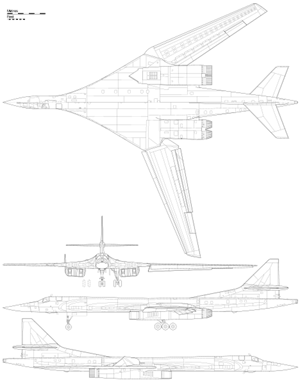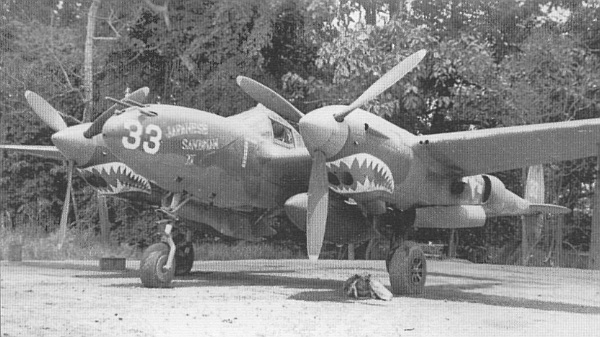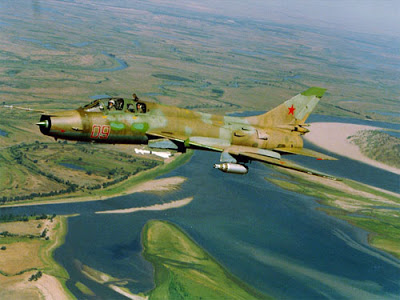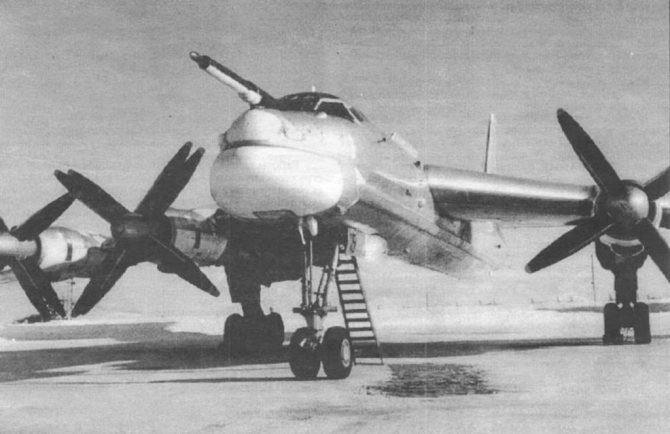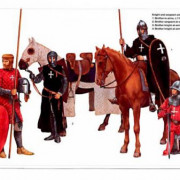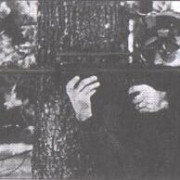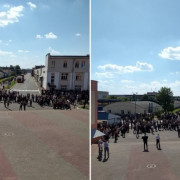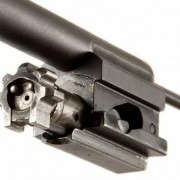Бомбардировщик боинг b-29 «суперкрепость»
Содержание:
World War IIEdit
The initial plan, implemented at the direction of President Roosevelt as a promise to China and called Operation Matterhorn, was to use B-29s to attack Japan from four forward bases in Guangxi, Southern China, with five main bases in Bangladesh,India, and to attack other targets in the region from China and India as needed. The Chengdu region was eventually chosen over the Guilin region to avoid having to raise, equip, and train fifty Chinese divisions to protect the advanced bases from Japanese ground attack. The XX Bomber Command, initially intended to be two combat wings of four groups each, was reduced to a single wing of four groups because of the lack of availability of aircraft, automatically limiting the effectiveness of any attacks from China.
This was an extremely costly scheme, as there was no overland connection available between India and China, and all the supplies had to be flown over the Himalayas. B-29s started to arrive in India in early April 1944. The first B-29 flight to airfields in China (over the Himalayas, or «The Hump») took place on 24 April 1944. The first B-29 combat mission was flown on 5 June,1944, with 77 out of 98 planes launched from India bombing the railroad shops in Bangkok (Five B-29s were lost to non-combat causes).
The need to use inconvenient bases in China for attacks against Japan ceased after the capture of the Marianas islands in 1944. On the islands of Tinian, Saipan and Guam five major airfields, each constructed as a base for a four-group wing of B-29s, became the launch sites for the large B-29 raids against Japan in the final year of the war. The islands could be easily supplied by ship. The first B-29 arrived on Saipan on October 12 1944, and the first combat mission was launched from there on October 28, 1944, with 14 B-29s attacking the Truk atoll. The first mission against Japan from bases in the Marianas was flown on November 24, 1944, with 111 B-29s sent to attack Tokyo. From that point, ever more intense raids were launched regularly until the end of the war. These attacks succeeded in devastating all large Japanese cities (with the exception of Kyoto) and gravely damaged Japan’s war industries. Although less appreciated, the aerial mining program carried out by B-29s against Japanese shipping routes and harbor approaches had profoundly degraded Japan’s ability to support its population and fight the war.
Enola Gay
Enola Gay
The B-29 was used in World War II only in the Pacific Theatre.
Korean Conflict and Postwar ServiceEdit
The B-29 was later used in the Korean War. At first, the bomber was used in normal strategic daylight bombing missions, though North Korea’s few strategic targets and industries were quickly reduced to rubble. More importantly, in 1950 numbers of Soviet MiG-15 ‘Fagot’ jet fighters appeared over Korea (a plane specifically designed to shoot down the B-29), and after the loss of several aircraft, future B-29 raids were restricted to night-only missions, largely in an interdictive role. Over the course of the war, B-29s flew 20,000 sorties and dropped 200,000 tons (180,000 tonnes) of bombs. B-29 gunners were credited with shooting down 27 enemy aircraft.
B-29A
- Section source: Baugher
Boeing B-29A-70-BN (S/N 44-62305). Note the streamlined top turret added on block 40 A models and later.
The B-29A was an improved version of the original B-29 production model. This is the definitive wartime variant of the B-29. All 1,119 B-29A’s were built at the Boeing plant in Renton, Washington, formerly used by the United States Navy.
Enhancements made in the B-29A included a better wing design and defensive modifications. Due to a demonstrated weakness to head-on fighter attacks, the number of machine guns in the forward dorsal turrets was doubled to four. Where the wings of previous models had been made by the sub-assembly of two sections, the B-29A wing was built up from three. This made construction easier, and increased the strength of the airframe. The B-29A was produced until May 1946, when the last aircraft was completed. It was much used during the Korean War, but was quickly phased out when the jet bomber (B-47 Stratojet) became operational.
Washington B Mk 1 – This was the service name given to 88 B-29As supplied to the Royal Air Force.
Основные модификации Boeing B-29 «Superfortress»
Боинг В-29 — двигатели R-3350-23, -23А или -41 (2200 л.с), на последних сериях — R-3350-57 или -57А той же мощности, но повышенной надежности. Стрелковое вооружение — 4 выдвижные башни (две верхние и две нижние) с 2 12,7-мм пулеметами в каждой, хвостовая установка с 2 такими же пулеметами и 1 20-мм пушкой. В ходе производства стали устанавливать новую переднюю верхнюю башню с 4 12,7-мм пулеметами, но затем вновь вернулись к двум пулеметам. На самолетах последних серий не устанавливалась пушка в хвостовой установке. Максимальная масса бомбовой нагрузки — 9070 кг. Экипаж — 11 чел. Изготовлена 2181 машина (1620 — фирмой «Боинг», 357 — «Белл» и 204 — «Мартин»).
В-29А — изменена конструкция центроплана с целью упрощения технологии изготовления, что привело к уменьшению запаса топлива. Двигатели R-3350-57, -57А или -59. Стрелковое вооружение — 12 12,7-мм пулеметов (4 в передней верхней башнях, по 2 в задней верхней, двух нижних башнях и хвостовой установке). Фирмой «Боинг» построено 1119 самолетов.
Boeing В-29В — облегченный вариант с сокращенным составом оборудования и вооружения. Из стрелкового вооружения оставлена лишь одна хвостовая установка с тремя (на первых сериях — двумя) 12,7-мм пулеметами. Максимальная бомбовая нагрузка — 10 340 кг. Выпускался фирмой «Белл» с февраля 1945 г., построено 311 экземпляров.
F-13A (с 1946 г. FB-29, с 1947 г. — RB-29) — фоторазведчик. С августа 1944 г. переоборудовано 117 В-29А.
В послевоенное время значительное количество «Сверхкрепостей» переоборудовано в специализированные варианты: учебный ТВ-29 (со снятым стрелковым оружием), спасательный SB-29 (16 машин), заправщики КВ-29М (92) и КВ-29Р (116), метеоразведчик WB-29, бомбардировщик для действий в Арктике B-29F (6), бомбардировщик с системой дозаправки в воздухе B-29L (72).
B-29B
Boeing B-29B-60-BA (S/N 44-84061) «Pacusan Dreamboat»
- Section source: Baugher’s Encyclopedia & National Museum of the USAF
The B-29B was a modification used for low-level raids, designed with the intent of firebombing Japan. Since fighter opposition was minimal over Japan in late 1944, many of the Army Air Force leadership — most notably Curtis LeMay, commander of the XXI Bomber Command — felt that a (lighter) faster bomber would better evade Japanese flak.
In the B-29B, as with the atomic raid-dedicated versions earlier, all defensive armament was removed except for that in the tail turret. Initially the armament was two .50 in AN/M2 machine guns and one 20 mm M2 cannon which was soon changed to three .50 in AN/M2s. The weight saved by removing the guns increased the top speed from 357 mph to 364 mph (575 km/h to 586 km/h).
Also incorporated on this version was an improved APQ-7 «Eagle» bombing-through-overcast radar that was fitted in an airfoil-shaped radome under the fuselage.
All 311 B-29Bs were built at the Bell plant in Marietta, Georgia («Bell-Atlanta»).
Перевод «двадцать девять» на другие языки
- Азербайджанский
- iyirmi doqquz
- Албанский
- 29
- Английский
- twenty nine
- Арабский
- تسعة وعشرين
- Армянский
- քսան ինը
- Белорусский
- дваццаць дзевяць
- Болгарский
- двадесет и девет
- Вьетнамский
- hai mươi chín
- Голландский
- negenentwintig
- Греческий
- εικοσιεννέα
- Грузинский
- ოცდაცხრა
- Иврит
- עשרים ותשע
- Идиш
- 29
- Ирландский
- fiche a naoi
- Исландский
- Tuttugu og níu
- Испанский
- veintinueve
- Итальянский
- ventinove
- Китайский
- 29
- Корейский
- 스물아홉
- Латынь
- et viginti novem,
- Латышский
- 29
- Литовский
- 29
- Монгольский
- хорин есөн
- Немецкий
- neunundzwanzig
- Норвежский
- tjueni
- Персидский
- 29
- Польский
- dwadzieścia dziewięć
- Португальский
- vinte e nove
- Румынский
- douăzeci și nouă
- Сербский
- двадесет девет
- Словацкий
- dvadsať deväť
- Словенский
- devetindvajset
- Тайский
- 29
- Турецкий
- ilk yirmi dokuz
- Украинский
- двадцять дев’ять
- Финский
- kaksikymmentäyhdeksän
- Французский
- vingt-neuf
- Хорватский
- dvadesetdevet
- Чешский
- dvacet devět
- Шведский
- tjugo nio
- Эсперанто
- dudek naŭ
- Эстонский
- TWENTY NINE Välja
- Японский
- 29
MX-767 Banshee
В 1946 году комиссия по снабжению только что сформированных ВВС США рассматривала возможность создания на базе B-29 межконтинентального самолёта-снаряда, несущего ядерную боеголовку. Военным хотелось создать носитель атомного оружия, способный поражать объекты в Европе непосредственно с территории США — что пилотируемый B-29 сделать не мог. Переоснащение машины в беспилотный самолет-снаряд позволяло увеличить вдвое боевой радиус (за счет отсутствия необходимости возвращения на базу).
Программа получила индекс MX-767 «Banshee» и рассматривалась как «промежуточное» решение, до запуска в серию межконтинентального бомбардировщика Convair B-36. Было выполнено несколько исследовательских полетов B-29 с целью отработки навигационного оборудования в рамках данной программы. Практика показала, что для превращения B-29 в межконтинентальный самолет-снаряд придется осуществить значительный объём исследовательских работ в области навигации беспилотных аппаратов, и программа была остановлена в 1950 году, как только на вооружение начали поступать B-36.
Литература
- . Журнал: «Техника воздушного флота». 1944 г. Статья: «Бомбардировщик Боинг В-29 «Суперфортресс». →
- . И. И. Эскин. Самолётные шасси с носовым колесом. Оборонгиз. 1947 г. →
- . М. Галлай. Испытано в небе. « Ту-4 — дальний, высотный, скоростной». Издательство ЦК ВЛКСМ. «Молодая Гвардия». 1965 г. →
- . В. Б. Шавров. «История конструкций самолётов в СССР. 1938÷1950 гг.». Машиностроение. Москва. 1978 г. →
- . Журнал: «Крылья Родины» 1984 г. № 06 стр.26,27. К. Косминков, В. Климов, А. Н. Пономарёв. Статья: «Ту-4, Ту-80». →
- . Л.Лазарев. «Коснувшись неба». Москва. ПРОФИЗДАТ. 1983 г. →
- [5/1]. Журнал: «Крылья и родины», 1989 г. № 01 стр.24,25. Л.Кербер, М.Саукке. Статья: «Не копия, а аналог». Часть 1.[5/1]→
- [5/2]. Журнал: «Крылья и родины», 1989 г. № 02 стр.33,34. Л.Кербер, М.Саукке. Статья: «Не копия, а аналог». Часть 2.[5/2]→
- . Журнал: «Крылья Родины» 1989 г. № 04 стр.22÷24. О. Алексеев. «Первый шаг к паритету». →
- . Журнал: «Авиационное Обозрение», 1996 г. № 05 стр.2÷14. С.Мороз. Монография: «Сделано в СССР». →
- Журнал: «Авиация и Космонавтика» 1996 г. № 06 стр.6÷79. В.Ригмант. «В-29, Ту-4 — стратегические близнецы».
- Журнал: «Авиация и Космонавтика» 1997 г. № 04 стр.23÷27. В-50 — «Суперкрепость в квадрате».
- Журнал: «Моделист Конструктор» 1997 г. № 09 стр.36÷40. С.Цветков. «Тени Хиросимы».
- . Журнал: «Крылья Родины» 1998 г. № 10. стр. 24÷27. В.Котельников, Д.Соболев. «Суперкрепость в Советском Союзе». →
- . Журнал: «Авиация и Космонавтика». 1999 г. № 01 стр.43. «94» Дальний бомбардировщик проект. →
- . Журнал: «Моделист Конструктор» 2000 г. № 11 стр.37÷40. А.Чечин «Летающий авианосец». Статья о В-29. →
- . Журнал: «Авиация и Космонавтика» 2001 г. № 9 стр.15÷19 В.Ригмант. Статья: «Встреча с Америкой». →
- . Журнал: «Крылья Родины» 2002 г. № 01. стр.3÷8. Н.Якубович. «Наш ответ США». →
- «Авиаколлекция» 2008 г. № 01 стр. 1÷32. В. Г. Ригмант. «Тяжёлый бомбардировщик В-29».
- «Авиаколлекция» 2008 г. № 02 стр. 1÷. В. Г. Ригмант. «Дальний бомбардировщик Ту-4».
- Boeing B-29 «Superforthress» variants.
- книги
- Котельников В.Р. Авиационный ленд-лиз. — М.: Фонд «Русские Витязи», 2015. — 368 с. — 1000 экз. — ISBN 985-5-9906036-3-9.
- Мороз С. Равновесие страха (рус.) // Авиационное обозрение. — Х., 1995. — № 1. — С. 48—51.
История создания
К началу Второй мировой войны командование Авиационного корпуса Армия США пришло к выводу о необходимости создания стратегического бомбардировщика — проекту был присвоен шифр VHB (англ. Very Heavy Bomber — «очень тяжёлый бомбардировщик»). Однако, когда стало ясно, что данному бомбардировщику придется бомбить цели на другой стороне Тихого океана, проект получил новое обозначение — VLR (англ. Very Long Range, «очень большая дальность»). Детальная проработка проекта VLR началась в 1940 году.
В конкурсе на постройку дальнего стратегического бомбардировщика участвовали четыре американские авиастроительные компании: «Consolidated» (позже «Convair»), «Boeing», «Douglas» и «Lockheed». Они предложили проекты бомбардировщиков под обозначениями XB-32, XB-29, XB-31 и XB-30 соответственно. Через некоторое время из конкурса выбыли «Douglas» и «Lockheed», а с двумя оставшимися заключили соглашение о проектировании тяжёлых бомбардировщиков, поэтому в 1940 году могла обещать командованию Авиакорпуса Армии США готовые самолёты через два-три года. «Boeing» получила заказ на постройку более 1500 бомбардировщиков ещё до первого полёта прототипа. Заказ был не случайным — ещё в 1938 году компания направила командованию Авиакорпуса Армии США предложение по бомбардировщику B-17 с герметичной кабиной, позволяющей выполнять высотные полёты. Сначала военные отказывали «Боинг», но, как только характер войны изменился, и такой самолёт потребовался, военные изменили своё отношение к предложениям компании, которая вскоре представила сразу несколько проектов — Model 316, 322, 333, 334 и 341.
Бомба «Fat Man» в инертном снаряжении в момент загрузки в бомбоотсек B-29 для отработки приёмов бомбометания, 1945.
Первый прототип XB-29 поднялся в воздух 21 сентября 1942 года. ВВС США оговаривали максимальную скорость полёта в 644 км/ч, что оказало влияние на компоновку самолёта — среднеплан с крылом большого удлинения и фюзеляжем круглого сечения. За прототипами последовали 14 предсерийных самолётов YB-29.
Производство самолёта потребовало некоторых усилий со стороны авиапромышленности США, в итоге B-29 собирали на четырёх заводах разных компаний.
Модификация бомбардировщика для доставки атомных бомб — B-29B Silverplate series — отличалась уменьшенной взлетной массой. Было убрано оборонительное вооружение, состоявшее уже из трех пушек M2 и нескольких пулеметных турелей, что позволило повысить крейсерскую скорость, также были выполнены мелкие конструктивные доводки для увеличения живучести экипажа при атомном взрыве.
Применение В-29 в качестве первого массового носителя атомной бомбы перевело его стратегическое значение в новое качество, став одной из отправных точек гонки вооружений за паритет и холодной войны между СССР и США вообще.
История создания
К началу Второй мировой войны командование Авиационного корпуса Армия США пришло к выводу о необходимости создания стратегического бомбардировщика — проекту был присвоен шифр VHB (англ. Very Heavy Bomber — «очень тяжёлый бомбардировщик»). Однако, когда стало ясно, что данному бомбардировщику придется бомбить цели на другой стороне Тихого океана, проект получил новое обозначение — VLR (англ. Very Long Range, «очень большая дальность»). Детальная проработка проекта VLR началась в 1940 году.
В конкурсе на постройку дальнего стратегического бомбардировщика участвовали четыре американские авиастроительные компании: «Consolidated» (позже «Convair»), «Boeing», «Douglas» и «Lockheed». Они предложили проекты бомбардировщиков под обозначениями XB-32, XB-29, XB-31 и XB-30 соответственно. Через некоторое время из конкурса выбыли «Douglas» и «Lockheed», а с двумя оставшимися заключили соглашение о проектировании тяжёлых бомбардировщиков, поэтому в 1940 году могла обещать командованию Авиакорпуса Армии США готовые самолёты через два-три года. «Boeing» получила заказ на постройку более 1500 бомбардировщиков ещё до первого полёта прототипа. Заказ был не случайным — ещё в 1938 году компания направила командованию Авиакорпуса Армии США предложение по бомбардировщику B-17 с герметичной кабиной, позволяющей выполнять высотные полёты. Сначала военные отказывали «Боинг», но, как только характер войны изменился, и такой самолёт потребовался, военные изменили своё отношение к предложениям компании, которая вскоре представила сразу несколько проектов — Model 316, 322, 333, 334 и 341.
Бомба «Fat Man» в инертном снаряжении в момент загрузки в бомбоотсек B-29 для отработки приёмов бомбометания, 1945.
Первый прототип XB-29 поднялся в воздух 21 сентября 1942 года. ВВС США оговаривали максимальную скорость полёта в 644 км/ч, что оказало влияние на компоновку самолёта — среднеплан с крылом большого удлинения и фюзеляжем круглого сечения. За прототипами последовали 14 предсерийных самолётов YB-29.
Производство самолёта потребовало некоторых усилий со стороны авиапромышленности США, в итоге B-29 собирали на четырёх заводах разных компаний.
Модификация бомбардировщика для доставки атомных бомб — B-29B Silverplate series — отличалась уменьшенной взлетной массой. Было убрано оборонительное вооружение, состоявшее уже из трех пушек M2 и нескольких пулеметных турелей, что позволило повысить крейсерскую скорость, также были выполнены мелкие конструктивные доводки для увеличения живучести экипажа при атомном взрыве.
Применение В-29 в качестве первого массового носителя атомной бомбы перевело его стратегическое значение в новое качество, став одной из отправных точек гонки вооружений за паритет и холодной войны между СССР и США вообще.
General info
Flight Performance
The B-29A-BN, much like its contemporaries the Messerschmitt Me 264, Blohm & Voss BV 238 and Tupolev Tu-4 was built for the sole purpose of flying high and dropping large amounts of bombs. To account for these characteristics, others such as manoeuvrability, rate-of-climb and acceleration were compromised. The B-29 is a heavy aircraft which when adding 10,000 – 20,000 lbs of ordnance will only make the plane that much more difficult to get to altitude, but once there this aircraft does have a decent cruising speed. To help speed up gameplay for this aircraft, it is given an air-start at the beginning of matches and also after landing to reload and repair due to its sheer size and difficulty climbing to its bombing altitude.
The typical method of utilising this bomber is to fly the aircraft to a higher altitude. Depending on the enemy fighters, attackers and interceptors which appear in the match, you may be able to stay lower around 20,000 ft (6,000 m) or you may need to increase closer to 30,000 ft (9,150 m) to make it extremely difficult for the fighters to follow you up and many if they do get that high, their engines are struggling to keep the plane above stall speed which provides you with the opportunity to leave them behind or to easily pick them off with your gunners.
One downside to flying at the higher altitudes in arcade battles is that if you bomb a base but don’t completely destroy it, it is difficult to circle back around and bomb again when the bombs have reloaded. A wide circle is necessary to accomplish this and it may be better and more efficient instead to fly towards another base, bomb it and turn around and finish off the first base. Another option too is to leave the partially bombed bases for the smaller and slower bombers on your team to finish off or just catch the partially bombed bases on a return pass.
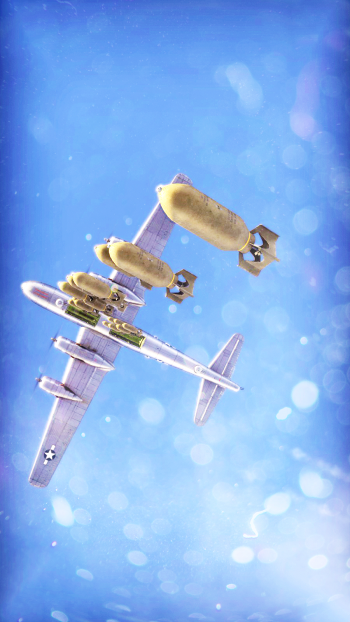
| Characteristics | |||||||
|---|---|---|---|---|---|---|---|
| Stock | |||||||
| Max Speed(km/h at 9,100 m) | Max altitude(meters) | Turn time(seconds) | Rate of climb(meters/second) | Take-off run(meters) | |||
| AB | RB | AB | RB | AB | RB | ||
| 613 | 602 | 12 000 | 33.5 | 34.4 | 2.9 | 4.2 | 1,800 |
| Upgraded | |||||||
| Max Speed(km/h at 9,100 m) | Max altitude (meters) | Turn time (seconds) | Rate of climb(meters/second) | Take-off run (meters) | |||
| AB | RB | AB | RB | AB | RB | ||
| 669 | 641 | 12 000 | 30.7 | 32.0 | 11.7 | 6.5 | 1,800 |
Details
| Features | ||||
|---|---|---|---|---|
| Combat flap | Take-off flap | Landing flap | Air brakes | Arrestor gear |
| ✓ | ✓ | ✓ | X | X |
| Limits | ||||
|---|---|---|---|---|
| Wing-break speed(km/h) | Gear limit(km/h) | Combat flap (km/h) | Max Static G | |
| + | — | |||
| 609 | 389 | 340 | ~1 | ~1 |
| Optimal velocities | |||
|---|---|---|---|
| Ailerons(km/h) | Rudder(km/h) | Elevators(km/h) | Radiator(km/h) |
| < 340 | < 350 | < 290 | > 400 |
| Compressor (RB/SB) | ||
|---|---|---|
| Setting 1 | ||
| Optimal altitude | 100% Engine power | WEP Engine power |
| 9,720 m | 2,200 hp | 2,499 hp |
Engine performance
| Engine | ||
|---|---|---|
| Engine Name | Number present | |
| Wright R-3350-57 18-cylinder | 4 | |
| Engine characteristics | ||
| Weight (each) | Type | Cooling |
| 1,251 kg | Radial | Air |
| Engine power (Stock) | ||
| Max | Take-off | |
| 1,975 hp | 2,276 hp | |
| Engine power (Upgraded) | ||
| Max | Take-off | |
| 2,200 hp | 2,502 hp |
Survivability and armour
- 60 mm Bulletproof glass in front of the pilots.
- 6.5 mm Steel plates in front of the pilots.
- 6.5 mm Steel plates behind the pilots.
- 6.5 mm Steel plates in front of tail control tractions.
- 6.5 mm Steel plates boxing around rear dorsal gunner and beam gunners.
- 6.5 mm Steel plate behind the rear ventral gunner.
- 60 mm Bulletproof glass in front of tail gunner.
- 6.5 mm Steel plate in front of tail gunner.
The B-29A-BN had to be judicious when it came to providing protecting armour for the aircrew at the sacrifice of additional fuel or ordnance. In fact, later models removed many of their defensive turrets in order to allow for more fuel and ordnance to be loaded. It is obvious that an aircraft this size will be a huge target for enemy fighters to attack with the nose section (cockpit) and the tail turret being the two most likely targets (head-on attack and tail approach attack) and thus both areas were outfitted with 60 mm bulletproof glass which helps against lower calibre weapons, however 20 mm and above make short work of the bulletproof glass. 6.5 mm steel plates are scattered around the aircraft to provide protection for both the crew members and some of the control surface linkages. Though not a stop-all invincible shield for the crew, it many instances it provided enough protection to allow crew members to survive and fight another day.
Armaments
Suspended armament
 Main articles: AN-M64A1 (500 lb), AN-M65A1 (1,000 lb), AN-M66A2 (2,000 lb)
Main articles: AN-M64A1 (500 lb), AN-M65A1 (1,000 lb), AN-M66A2 (2,000 lb)
The B-29A-BN can be outfitted with the following ordinance:
- 20 x 500 lb AN-M64A1 bombs (10,000 lb total)
- 40 x 500 lb AN-M64A1 bombs (20,000 lb total)
- 18 x 1000 lb AN-M65A1 bombs (18,000 lb total)
- 8 x 2000 lb AN-M66A2 bombs (16,000 lb total)
One might say the B-29A-BN is effectively a dump truck which can dump a ton of explosives, no make that upwards of 10 tons of explosives upon enemy targets. Utilising speed at higher altitudes, it is the purpose of the Superfortress to race to an enemy base or ground targets and just rain down TNT. With three choices of bomb weights to choose from and four different configurations, there is no shortage of ways to destroy ground targets. The 1,000 lb and 2,000 lb bombs come in most handy for base bombing as they do the most amount of damage for the least amount of effort in a concentrated area. Area of denial is the speciality of the 500 lb bombs when used in carpet bombing operations. Carpet bombing is effectively laying down many of the 500 lb bombs at one time over an area where vehicles such as trucks, tanks and anti-aircraft vehicles or hardened structures such as pillboxes or anti-aircraft artillery may be located at. Since vehicles are on the move, dropping multiple bombs at a time making it more difficult for them to move out of the way and avoid the inbound ordnance.
With the B-29A-BN, there is no real overkill with the bombs, which can make the Superfortress a prime target to be eliminated early as with upwards of 20,000 lbs in bombs, the B-29A-BN can make short work of enemy bases and end the match earlier than most will expect.
Defensive armament
Main article: Browning M2 (12.7 mm)
The B-29A-BN is defended by:
- 2 x 12.7 mm Browning M2 machine guns, tail turret (550 rpg = 1,100 total)
- 2 x 12.7 mm Browning M2 machine guns, rear ventral turret (575 rpg = 1,150 total)
- 2 x 12.7 mm Browning M2 machine guns, rear dorsal turret (500 rpg = 1,000 total)
- 2 x 12.7 mm Browning M2 machine guns, front ventral turret (500 rpg = 1,000 total)
- 4 x 12.7 mm Browning M2 machine guns, front dorsal turret (400 rpg = 1,600 total)
The B-29A-BN is defended by an impressive 12 x .50 calibre Browning machine guns rivalled only by the Blohm & Voss BV 238, Tupolev Tu-4, Consolidated PB4Y-2 and B-24 and the Boeing B-17. Typically when bombers add more guns, they had to add more crew to operate them which increased the overall weight of the aircraft, though ensuring more protection, it also reduced the amount of fuel or bombs which could be carried.
As a historical note, the advent of early analogue computers which were outfitted on the B-29A-BN and the state-of-the-art General Electric Central Fire Control System allowed for remote operation of both dorsal and both ventral turrets along with the tail gun if needed. The turrets could be linked through the fire control system and allow one gunner to operate multiple guns at one time. Simplifying this process and allowing gunners from just about anywhere on the aircraft to control the turrets reduced the number of crew members needed to operate the aircraft. Though four times the size of a B-25, the B-29A-BN operated efficiently on the same amount of crew members, seven.
The computer-aided turrets allowed for more accuracy when firing and can train the guns in just about any direction needed to combat incoming fighters. The tail gunner position is especially deadly as a fighter perched on the tail will be flying into the oncoming bullets from the tail gun position, thereby taking more damage when hit and more likely to take on a critical hit or disabling blow. Though not totally invulnerable to the crafty fighter pilot, the B-29A-BN in its own right is a porcupine with sharp quills pointing in all directions which will make it as difficult as possible for anyone to get past the defences.
WB-29
Boeing WB-29A of the 53d Weather Reconnaissance Squadron in 1954
The WB-29s were production aircraft modified to perform weather monitoring missions. An observation position was fitted above the central fuselage section. They conducted standard data-gathering flights, including from the UK over the Atlantic. They were also used to fly into the eye of a hurricane or typhoon to gather information. Following nuclear weapons tests, some WB-29s used air sampling scoops to test radiation levels. On 3 September 1949, a WB-29 returning from Yokota AB, Japan, to Eielson AFB, Alaska, recovered radioactive debris in air sampling scoops from the cloud generated by the first atomic bomb test by the Soviet Union on 29 August.
YB-29
Boeing YB-29-BO (S/N 41-36957). Note the nose has an Erco ball turret with twin .50-cal. machine guns, and the fuselage package guns just below and aft of the cockpit have twin .50-cal. machine guns mounted.
The YB-29 was an improved XB-29 and 14 were built for service testing. Testing began in the summer of 1943, and dozens of modifications were made to the planes. The engines were upgraded from Wright R-3350-13s to R-3350-21s. Where the XB-29 had three-bladed props, the YB-29 had four-bladed propellers. Various alternatives to the remote-controlled defensive systems were tested on a number of them, particularly the fourth one delivered. After alternative arrangements had been fully tested, defensive armament was standardised at ten .50-calibre machine guns in turret-mounted pairs. The YB-29 also featured a better fire control system.
Боевое применение
Обломки B-29, сбитого 9 ноября 1950 года советскими МиГ-15
В бомбардировочных рейдах на Западноевропейском ТВД не применялись, использовались только на Тихоокеанском ТВД, с 1944 года.
Корейская война
По данным американского исследователя Джо Бауэра, от действий истребителей противника потеряно 16 B-29. В то же время по официальным американским данным (документ USAF Statistical Digest FY1953) ВВС США от огня истребителей потеряли 17 B-29, ещё 5 было сбито огнём с земли, 2 сбито неизвестно чем, 27 потеряно в бою по небоевым причинам (столкновение с землей, израсходование топлива, критические неисправности), 6 пропало без вести, 12 потеряно по «другим небоевым причинам» и 9 разбилось в катастрофах. Разведчики RB-29 также понесли потери: 1 «другая боевая потеря», 2 пропало без вести, 1 потерян по «другим небоевым причинам» и 3 разбилось в катастрофах. Самолёты SB-29 также участвовали в войне, известно о потере по меньшей мере 1 такой машины. Это даёт не менее 86 безвозвратных потерь самолётов типа B-29 в ходе войны.
По советским данным 69 B-29 было сбито советскими истребителями МиГ-15, не считая сбитых китайскими истребителями.
Нейтральные западные исследователи изучавшие применение B-29, указывают что потери бомбардировщиков от огня советских «МиГов» составили 44 самолёта, ещё 4-5 было сбито китайскими и корейскими истребителями. Больше всего B-29 было потеряно 12 апреля 1951 года, когда за один день было сбито или списано от огня советских МиГ-15 12 бомбардировщиков.

